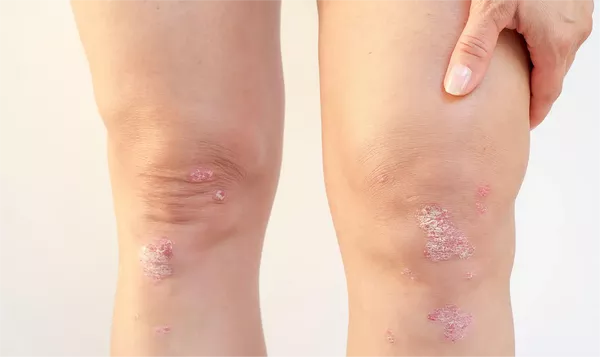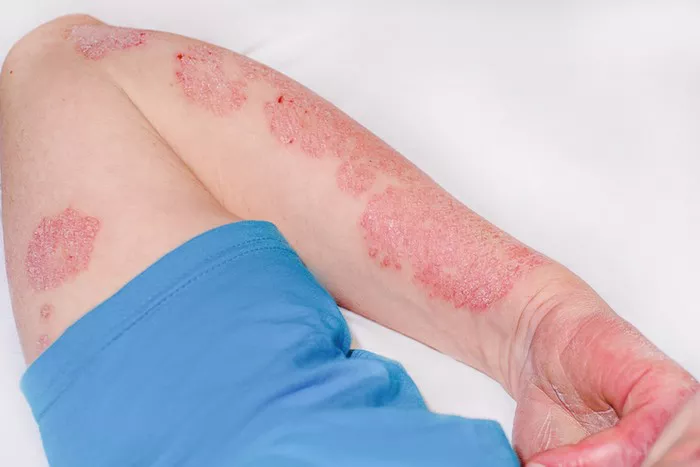Psoriasis is a chronic autoimmune condition that accelerates the life cycle of skin cells, leading to the rapid buildup of cells on the skin surface. This results in scaling and inflammation, often causing significant discomfort and emotional distress. Despite the myriad of treatments available, from topical ointments to systemic medications, one natural remedy stands out for its efficacy and simplicity: sunlight.
Understanding Psoriasis and Its Challenges
Psoriasis affects about 2-3% of the global population and manifests in several forms, the most common being plaque psoriasis. This type is characterized by raised, red patches covered with a silvery white buildup of dead skin cells. Psoriasis can occur anywhere on the body but is most commonly found on the elbows, knees, scalp, and lower back. The exact cause of psoriasis remains unclear, but it is known to involve an interplay of genetic and environmental factors, immune system dysfunction, and triggers such as stress, skin injuries, and infections.
The impact of psoriasis extends beyond physical symptoms. Patients often experience psychological stress, social stigma, and a reduced quality of life. Consequently, effective management of psoriasis is crucial, not only for physical health but also for mental well-being.
Sunlight: A Natural Remedy
Sunlight has long been recognized for its therapeutic effects on psoriasis. This natural treatment method, known as heliotherapy, involves the controlled exposure to natural sunlight. The beneficial effects of sunlight on psoriasis are primarily due to the ultraviolet (UV) component of sunlight, which can modulate the immune response and slow down the rapid turnover of skin cells.
Ultraviolet Radiation and Skin Health
Sunlight comprises different types of ultraviolet radiation: UVA, UVB, and UVC. UVC is mostly absorbed by the Earth’s atmosphere and does not reach the surface. UVA and UVB, however, penetrate the atmosphere and have distinct effects on the skin.
- UVA Rays: These rays penetrate deeper into the skin and are primarily responsible for aging and long-term skin damage. While not as effective as UVB rays in treating psoriasis, UVA can still play a role when used in combination with other treatments.
- UVB Rays: These rays are more energetic than UVA and are crucial in the treatment of psoriasis. UVB radiation helps to slow down the growth of affected skin cells, reducing scaling and inflammation.
Mechanisms of Sunlight in Psoriasis Treatment
Sunlight’s therapeutic benefits in psoriasis treatment are multi-faceted. Here are the key mechanisms:
1. Reduction of Skin Cell Turnover: UVB radiation slows down the rapid production of skin cells, which is a hallmark of psoriasis. By normalizing the skin cell turnover rate, UVB helps in reducing the characteristic scaling and thickness of psoriatic plaques.
2. Modulation of the Immune System: Psoriasis is an autoimmune condition where the immune system attacks healthy skin cells. UV radiation can suppress the overactive immune response, leading to a reduction in inflammation and subsequent clearing of psoriatic lesions.
3. Vitamin D Synthesis: Exposure to sunlight facilitates the synthesis of vitamin D in the skin. Vitamin D has anti-inflammatory properties and can help modulate the immune response, further aiding in the management of psoriasis.
4. Psychological Benefits: Sunlight exposure can boost the production of serotonin, a hormone that enhances mood and promotes a sense of well-being. Given the psychological burden of psoriasis, the mood-enhancing effects of sunlight can contribute to an overall improvement in quality of life.
Clinical Evidence Supporting Sunlight Therapy
Numerous studies have highlighted the benefits of sunlight in managing psoriasis. Research shows that controlled exposure to UVB radiation can lead to significant improvement in psoriatic symptoms. A study published in the Journal of the American Academy of Dermatology reported that 84% of psoriasis patients who underwent UVB phototherapy achieved clear or almost clear skin. Another study found that patients who received heliotherapy showed a substantial reduction in the severity of their symptoms after regular sun exposure sessions.
Practical Guidelines for Sunlight Exposure
While sunlight can be beneficial, it’s essential to approach sun exposure with caution to avoid the risks associated with UV radiation, such as sunburn and increased skin cancer risk. Here are some practical guidelines for using sunlight as a treatment for psoriasis:
1. Gradual Exposure: Start with short periods of sun exposure, gradually increasing the duration to allow the skin to adapt and minimize the risk of sunburn.
2. Timing: The intensity of UV radiation varies throughout the day. Early morning or late afternoon sun exposure is recommended to reduce the risk of skin damage.
SEE ALSO: What Are Early Signs of Psoriatic Arthritis
3. Duration: Aim for about 10-30 minutes of sun exposure, two to three times a week. The exact duration can vary based on skin type, geographic location, and the severity of psoriasis.
4. Protection: Protect unaffected areas of the skin with sunscreen to prevent sunburn and minimize the risk of skin cancer. Sensitive areas, such as the face, should always be protected.
5. Medical Supervision: Consult with a healthcare provider before starting heliotherapy, especially if you are undergoing other treatments or have a history of skin cancer.
Combining Sunlight with Other Treatments
Sunlight therapy can be effectively combined with other psoriasis treatments for enhanced results. Here are some common combinations:
1. Topical Treatments: Combining sun exposure with topical treatments, such as corticosteroids or vitamin D analogs, can enhance the overall efficacy. The anti-inflammatory effects of topicals complement the benefits of UV radiation.
2. Systemic Medications: Patients on systemic treatments like methotrexate or biologics may find additional benefits from sunlight exposure. However, it is crucial to do this under medical supervision to avoid potential drug interactions and side effects.
3. PUVA Therapy: PUVA (psoralen plus UVA) therapy involves taking a psoralen medication that makes the skin more sensitive to UVA radiation, followed by UVA exposure. This method can be more effective for some patients but requires careful monitoring.
Risks and Considerations
While sunlight therapy offers numerous benefits, it also comes with potential risks. Excessive exposure to UV radiation can lead to:
- Sunburn: Overexposure to UV radiation can cause sunburn, leading to further skin damage and increasing the risk of skin cancer.
- Photoaging: Prolonged UV exposure accelerates the aging of the skin, leading to wrinkles, pigmentation changes, and loss of skin elasticity.
- Skin Cancer: The most significant risk associated with UV radiation is the increased risk of skin cancers, including melanoma, basal cell carcinoma, and squamous cell carcinoma.
To mitigate these risks, it is essential to follow the guidelines for safe sun exposure and seek regular dermatological assessments to monitor for any signs of skin damage.
Alternative Light Therapies
For those who cannot access natural sunlight or live in regions with limited sunlight, alternative light therapies are available. Phototherapy, using artificial UVB or UVA light sources, is a common alternative. Narrowband UVB therapy, which uses a specific wavelength of UVB radiation, is particularly effective and widely used in clinical settings.
Phototherapy can be administered in a controlled environment, allowing for precise dosing and minimizing the risk of overexposure. This method ensures that patients receive the therapeutic benefits of UV radiation while reducing the associated risks.
Conclusion
Sunlight, with its natural UV radiation, offers a valuable and effective approach to managing psoriasis. By reducing skin cell turnover, modulating the immune system, and enhancing psychological well-being, sunlight can significantly improve the quality of life for those with psoriasis. However, it is crucial to approach sunlight therapy with caution, following guidelines to minimize risks and combining it with other treatments when necessary. With careful management, the therapeutic potential of sunlight can be harnessed to bring relief to psoriasis sufferers, promoting healthier skin and a better quality of life.
Related Topics:


























